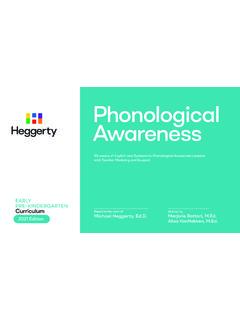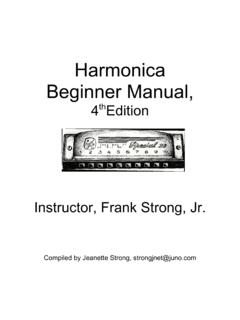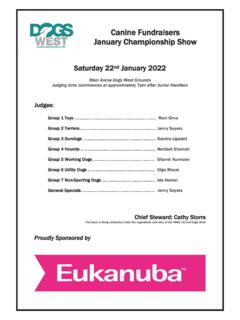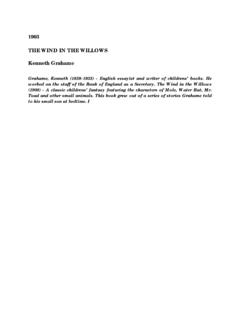Transcription of Memory Chapter 1 - AQA
1 Chapter 1 MemoryIt just weighs about 3 pounds about the same as 1 bags of sugar. And holds about 100 billion nerve cells, and all your memories. How are those memories stored? What do the memories actually look like in the brain? Why do you think you remember some things and not others? Are memories accurate? If they are not accurate, what makes them lack accuracy?ContentsProcesses of Memory Encoding, storage and retrieval 12 A study of encoding 14 Different types of Memory 16 Structures of Memory The multi-store model of Memory 18 Primacy and recency effects in recall 20 Memory as an active process Barlett s War of the Ghosts study 22 The theory of reconstructive Memory 24 Factors affecting the accuracy of Memory Interference 26 Context 28 False memories 30 Revision summary 32 Practice questions, answers and feedback 34 Multiple choice questions 36 Chapter 1 fromAQA Psychology for GCSEby Cara Flanagan, Dave Berry, Ruth Jones, Mark Jones and Rob Liddle Illuminate PublishingThese pages are uncorrected proofs and contain unfinalised artworkPlease note.
2 The following material been entered in an AQA approval processChapter 1 Memory10 11 Chapter 1 Contents It s on the tip of my phrase which generally means failing to retrieve a word or name from Memory but having some idea what it is and also feeling that any moment the word will be store retrieve Memory describes a whole lot of different things: remembering your last birthday, remembering the capital of France, remembering what you did in your last maths lesson, remembering stuff for exams, remembering where you put that necklace, remembering how to ride a bicycle ..In all cases, we can describe the process in terms of: 1. Encoding: the information must be translated into a form so that it can be held in your Storage: the information is then kept in your brain for a period of time possibly even a Retrieval: the information has to be located and brought back out of your can retrieve memories in several different ways: Recognition for example, doing multiple choice questions, you are given four possible answers and have to decide which one is the right answer.
3 Or seeing someone and being able to identify who they are which is different from trying to recall what someone looks like. Cued recall you try to remember a piece of information .. it s on the tip of your tongue .. and then someone gives you a clue or cue (It begins with the letter B ) and you can remember it. Free recall is when you retrieve it without it conceptApply it research1. Which one of the following terms is a description of storage? (i) Putting information into your Memory .(ii) Recalling information.(iii) Learning information in terms of how it sounds.(iv) Holding information in your Memory . [1 mark]2. Use your knowledge of psychology to explain how memories are encoded. Give an example in your answer. [2 marks] 3. Explain what is meant by each of the following terms: storage and retrieval. [4 marks]Check itEzra revisingRead the item below and then answer the questions that finds that when he revises for his Psychology test, he remembers more information if he re-writes passages of the textbook into his own words as opposed to just staring at the textbook page or reading the page out loud.
4 A friend tests Ezra by asking him to recall what he learned the previous day. Ezra finds that he remembers most of the information but not all of it. However, when he is given the opportunity to look at some key words from his notes he finds that he can remember the rest of the information. Questions1. Identify the different ways in which Ezra learns. Refer to the different types of encoding in your answer. [3 marks]2. Why couldn t Ezra remember all of his notes the following day? [2 marks]Recognition or recall?A psychologist conducted a study on Memory to see which method of remembering was superior recognition or recall. In the recall condition, 10 participants studied a list of 20 words. The list was removed and the participants wrote down as many words as they could remember. In the recognition condition, 10 different participants studied the same list of words.
5 After this was removed, they were given a list of 100 words which included the 20 they had seen previously. They had to select the words they Write a suitable alternative hypothesis for this study. [2 marks]2. Apart from ethical issues explain one strength of the research method used in this study. [2 marks]3. The psychologist used two different groups of participants. Identify this experimental design and explain how she could have allocated the participants to the two conditions of the study. [1 mark + 2 marks]4. The psychologist repeated the study using a matched pairs design. Explain one reason why she did this. [2 marks] Study tipDon t lose marksMake sure you expand enough on your answers. When explaining key terms in Psychology (see question 3 below), it is always good practice to give a relevant example to illustrate your point as this further demonstrates your knowledge and understanding of a topic (AO1).
6 Memory is an example of a cognitive process. Cognitive means knowledge. Chapter 3 concerns cognitive development looking at how children think and should always be on the lookout for links across the LINKE ncodingMemory involves three processes: putting information into your brain (encoding), storing it there and retrieving it again. To begin we are going to focus on the encoding means changing information so it can be stored in the brain. The form of the information is encodingSome memories are stored visually. For example, if I ask you to count the windows on your house you probably see your house in your mind in order to count the windows. That information is visually encodingSome memories are stored in terms of what they sound like. The most obvious example would be your favourite songs. If you think about them, you can hear the words and example is learning the alphabet to the tune of twinkle twinkle little star the rhyme is encoded encoding Semantic refers to meaning.
7 We all know thousands of words and your semantic Memory is the meaning of these words that is your ability to understand and use words and example, you know and understand the word elephant and you can use the word in a encodingTactile encoding is a Memory of what things feel like and olfactory Memory is Memory for associations ..All sorts of Memory tricks rely on making meaningful associations. For exampleROY G. BIV helps me (Cara) remember the colours of the rainbow (R stands for red, O for orange ..)Or you can use each letter to make up a rhyme: Richard of York Gave Battle in of these are well known mnemonic techniques methods to improve your recall of lists of Memory palaceEvery year a World Memory Championship is held where competitors have to memorise long lists of hundreds of numbers and words. Ben Pridmore, from Derby, has won three times and explains how he achieves mind boggling feats it s called the method of loci or the Memory palace.
8 He memorises long lists of numbers by encoding them in meaningful turns numbers into images and then places them around an environment he knows well in his case it is often his old school, Queen Elizabeth s Grammar School in Horncastle, Lincolnchsire. To recall the numbers he takes a walk round the school and retrieves may not be very impressed by this method but it is surprisingly effective and used by all Memory champions and stage performers. You can see a great demonstration of this method by Professor Robert Winston here is meant by ..Encoding Retrieval The specification says ..Processes of Memory : encoding (input), storage and retrieval (output).How memories are encoded and stored. Stretch and challengeTest it yourself. Ask people you know about whether they use meaningful associations such as the rhyme above to help them remember things.
9 What kinds of things do people use to help them remember?Processes of Memory : Encoding, storage and retrievalChapter 1 Memory12 13 Proces s es of Memory : Encoding, s torage and retrievalDRAFTS tudy tipUnderstanding the marksIt is possible that you may be asked to answer a 9-mark question on one study of encoding consisting of 4 marks description (AO1) and 5 marks of evaluation (AO3), as in Check it question 3. You can see that the question says describe and evaluate but it doesn t tell you how many marks for at this spread you may wonder there is more AO1 (description) of the study than AO3 (evaluation). The reason is that we have to spend time carefully describing the study so you can understand addition you may be asked just to describe the method or results of the study (as in Q2) so you need the detail but you must learn to describe each study succinctly so you have time for the evaluation.
10 A study of encodingAlan Baddeley (1966 a, b) conducted one of the best-known studies of encoding in distinguish between short-term memories (STMs) and long-term memories (LTMs) sometimes we store information but only rather briefly; for example, if you are phoning someone up you remember their phone number while dialing it but then the number is forgotten. This is an example of short-term memories are those which last longer, in other words, you can retrieve them later on, after hours or days or even s study: AimBaddeley aimed to see if there was a difference in the type of encoding used in short- and long-term were four groups of participants: A, B, C, and D. Each group was given one of the lists on the left. Group A heard 12 sets of five words from List A. For example, one set might be: cab, can, mad, man, max, another set might be: mat, map, cap, cad, cab.














